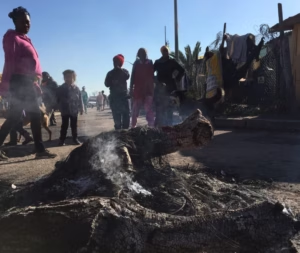In 2023, the world experienced a record-breaking rise in temperatures, contributing to severe disruptions in water availability, leading to prolonged droughts in several regions. This year’s extreme weather highlighted the growing vulnerability of global water systems.
The World Meteorological Organization (WMO) published its latest State of Global Water Resources report on Monday, October 7th. The report provides a comprehensive analysis of global water trends, including conditions of rivers, lakes, reservoirs, groundwater, soil moisture, glaciers, and evaporation rates from land and vegetation.
“We had never seen such a large area around the world which was under such dry conditions. So from the 33 years of data that we have considered in this report, it was the driest year,”
the WMO reported. This statement encapsulates the unprecedented nature of the water scarcity issues seen across various parts of the globe.
Regions in South America, including the famed Amazon River and Lake Titicaca, experienced particularly severe drought conditions. At the same time, countries in Oceania, in contrast, witnessed extreme flooding. These contrasting extremes reveal how water systems are being disrupted across continents.
The WMO has raised alarms over the increasing irregularity of water cycles, pointing to their role in exacerbating climate-related disasters. As the organization’s chief stated,
“Water is the basis of life on this planet. But it can also be a force of destruction. One of the key findings of this report is that water becomes increasingly unpredictable, what we call an erratic hydrological cycle leading to sudden floods, severe droughts and climate change is one of the causes of these extreme behaviours.”
This unpredictable nature of water has not only caused widespread droughts but has also led to catastrophic flooding in other regions. For instance, in November 2023, parts of the Horn of Africa were struck by intense rainfall, leading to devastating floods. These floods resulted in the deaths of at least 130 people, with aid organizations describing the event as a once-in-a-century occurrence.
A powerful storm struck South Africa’s Western Cape province from April 6 to 9, 2024, bringing with it extreme winds reaching speeds of up to 135 km/h. The storm caused widespread devastation across Cape Town and nearby regions, leaving over 1,500 people homeless as fierce winds fueled fires that destroyed entire communities, reducing homes to ashes.
Climate researchers Sabina Abba Omar and Stefaan Conradie, who have focused their studies on rainfall variability and extreme weather in the Cape Town area, provided insights into the factors contributing to such storms.
Is Cape Town seeing more extreme storms due to climate change?
A major cut-off low event is currently wrecking havoc across large parts of South Africa, most notably around Kariega. This follows another severe cut-off low storm that hit the Western Cape between 6 and 9 April 2024 after a series of destructive wind and rain storms between June 2022 and September 2023.
The highest daily rainfall total on record for the Cape Flats was measured at the airport on 13 June 2022. Parts of Cape Town saw their wettest March and September on record in 2023. Heavy rain caused major river flooding in June 2023 along the western mountains of South Africa.
Consequently, questions are being raised regarding the possible role of climate change in these severe weather events. Is climate change making cut-off lows around Cape Town more frequent and more intense? In a piece published in The Conversation, Sabina Abba Omar and Stefaan Conradie of CSAG address these questions. We look at different weather systems responsible for such storms, observations of past events and projections for the future. We conclude that competing factors currently preclude a clear answer, despite evidence that extreme rainfall events are intensifying in other parts of South Africa.
Read our piece here: https://theconversation.com/cape-of-storms-climate-researchers-explain-cape-towns-recent-extreme-weather-229012
















